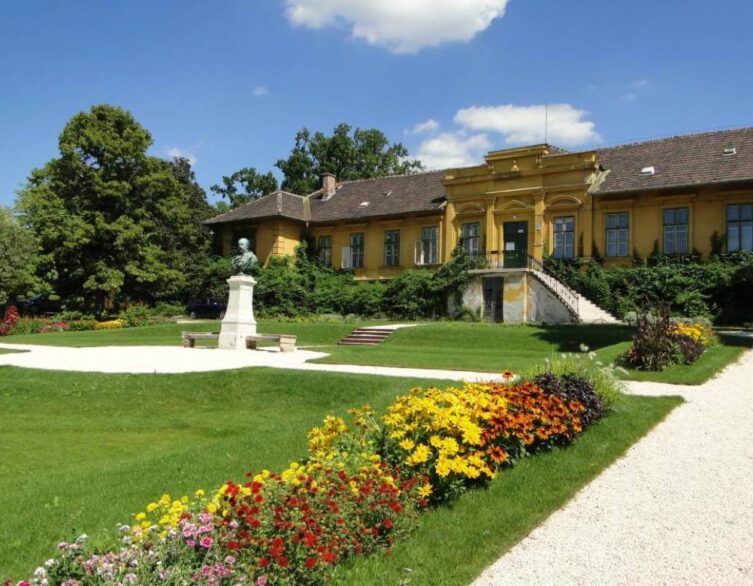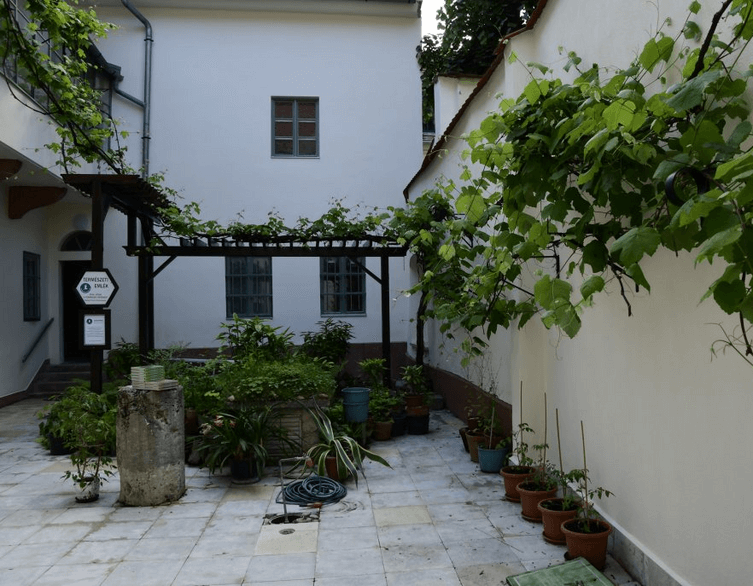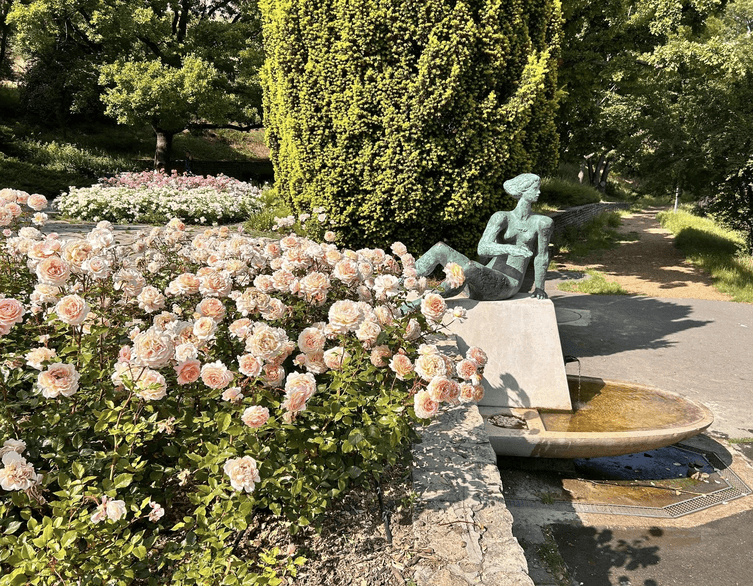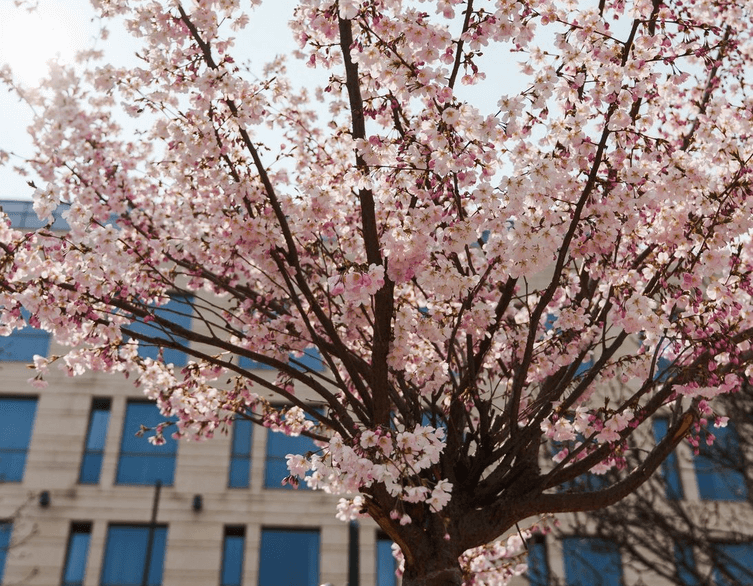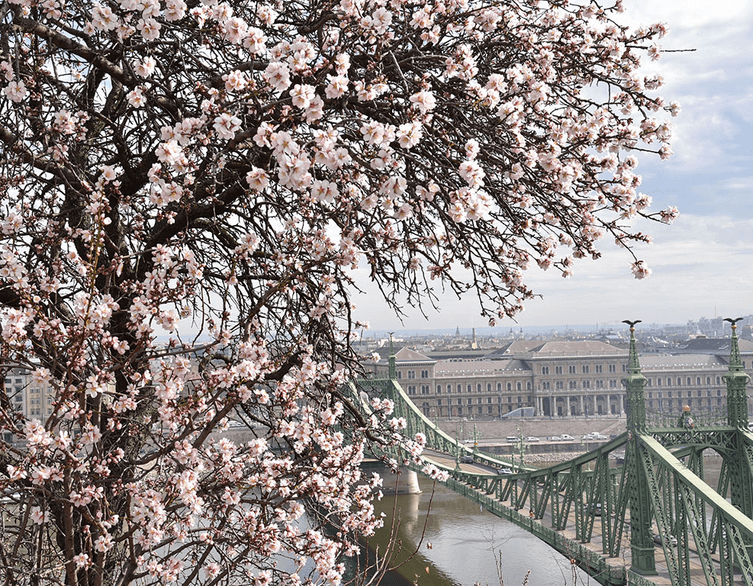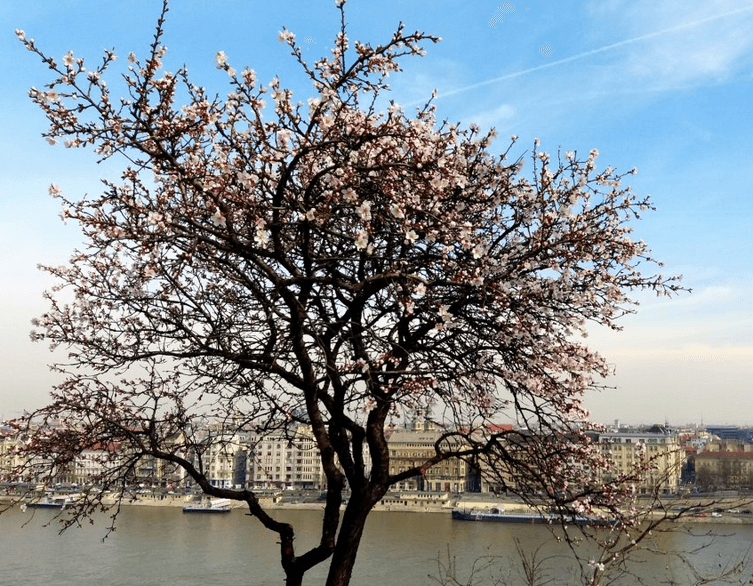The Arboretum of Buda: A Garden Flourishing All Year Round
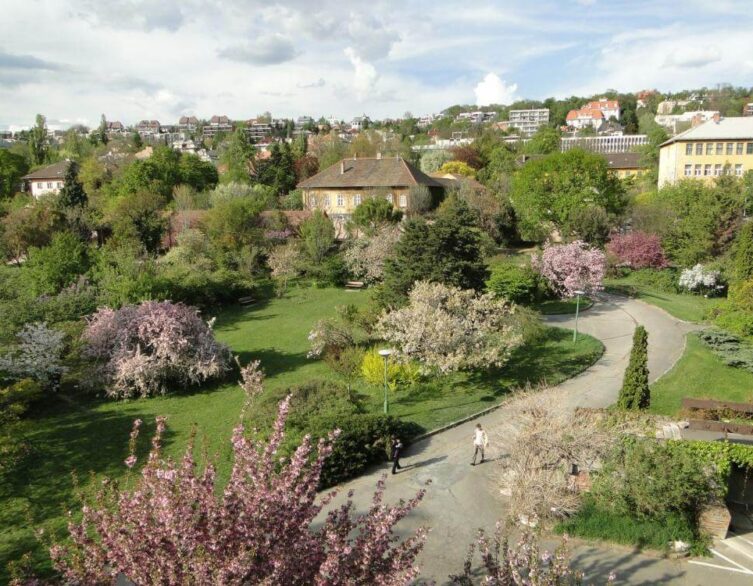
The Arboretum of Buda is one of the richest arboretums in Hungary, surrounding the building complex of the Buda Campus of the Hungarian University of Agriculture and Life Sciences, the center of horticultural higher education. The arboretum lies at the southern foot of Gellért Hill, between Villányi Road, Szüret Street and Somlói Road. The Ménesi Road divides its area into two parts, differing in age and character: the Lower Garden and the Upper Garden.
History
The area was once covered with vineyards, which were destroyed by the phylloxera epidemic at the end of the 19th century. It was here that Dr. Ferenc Entz, a physician of the 1848 War of Independence, founded his horticultural training school during the Bach era. The original form of the first building is preserved in contemporary pictures. The building itself – after several expansions – can still be found in the Upper Garden today.
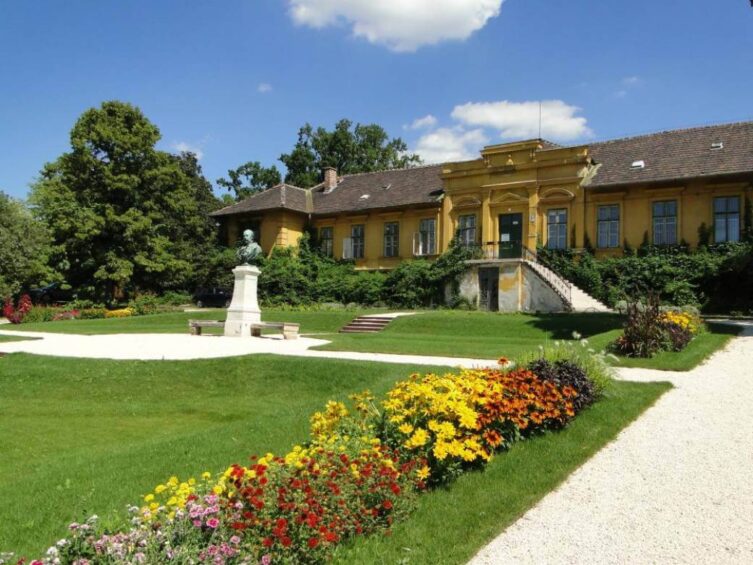
Image source: Buda Arboretum
The current plant material of the arboretum includes nearly 2,000 species and varieties of woody ornamental plants, several hundred bulbous flowers and nearly 250 other perennial ornamental plants.
Recognizing its outstanding dendrological values, its environmental significance, and its important role in Hungarian horticultural higher education, the leadership of the capital declared the area of the Arboretum a nature reserve by a resolution dated March 5, 1975.
The history of the Buda Arboretum began with the establishment of the associated educational institution, the Practical Training Institute for Horticulturists, which was founded in 1853 thanks to Dr. Ferenc Entz. The institution moved to the southern slope of Gellért Hill in 1876, and its name changed several times in later eras. Its first educational building was the building above Ménesi Road (today’s ‘E’ building), which once operated as a press house. Later, the symbolic, eclectic-style directorate building (‘F’ building) was established. Around them, in a smaller area than the current one, between and around the former vineyard plots, the arboretum was given space.
Planting of the Arboretum first began in the Upper Garden in the winter of 1893-94. Its designer and first director was the German-born gardener-dendrologist Károly Räde. 1,000 species of trees and shrubs and 90 perennial species were placed on the 3 hectares surrounding the newly formed Royal Hungarian Horticultural Institute. Some of the plants found here, such as a few oaks, walnuts, plane trees, and ginkgo trees above the ‘F’ building, are therefore nearly 120 years old. The design was landscape-like, with plants grouped according to their taxonomic affiliation. This grouping – in accordance with the demonstrative nature of the garden – served educational purposes.
In the late 1920s, the arboretum expanded by another 3/4 hectare. The plans for the new part were prepared by the renowned architect and garden designer of the time, Dr. Béla Rerrich, and the construction was supervised by Gyula Magyar, a dendrologist instructor at the institute. The plant material was significantly enriched in the following period, and according to a surviving catalog, it included 1,370 tree and shrub species, varieties, and cultivars. Of course, not all of the plant rarities brought here from different regions proved to be resistant under the given conditions. Many of them, especially the more delicate conifers and broadleaved evergreens, fell victim to winter cold or summer drought over time. By the 1950s, barely 800 taxa could be found in the collection.
The garden suffered from World War II even more than other arboretums in the country, as it was the scene of heavy fighting during the siege of Budapest. The traces of bullets and shrapnel can still be seen on the trunks of some old trees, while others “hide” war mine fragments inside them.
The renovation work that began in 1949 after the war is primarily associated with the name of Dr. Mihály Nádasi. The destroyed or too old, damaged plants were replaced or gradually replaced with new ones, and of course the garden was also enriched with new species. In 1963, a new irrigation system was built, which also provided an opportunity to introduce more demanding plants. The rock garden was rebuilt and expanded, increasing the number of perennial ornamental plants as well. In 1969, the upper area was temporarily reduced by about half a hectare due to the construction of the Central Dormitory and sports facilities. Later, after the completion of the construction, the staging area was transformed into a dendrological collection again.
Best deals of Budapest
Today, the Buda Arboretum is a protected nature reserve and a popular destination for both local residents and tourists visiting Budapest. It provides a tranquil oasis in the heart of the bustling city, with a rich collection of plants from around the world. Visitors can stroll the winding paths, admire the diverse flora, and enjoy the peaceful atmosphere. The arboretum also serves as an important educational and research facility for students and scholars of horticulture and botany.
Biological Significance
The Buda Arboretum is one of the richest arboretums in Hungary spanning 7.5 hectares between Villányi Street, Szüret Street and Somlói Road.
Biological Diversity
The arboretum is home to an impressive collection of nearly 2000 species and varieties of woody ornamental plants, hundreds of bulbous flowers, and around 250 other perennial ornamental plants. This diverse plant material has been shaped by two main factors – the purpose of the garden and its unique microclimate.
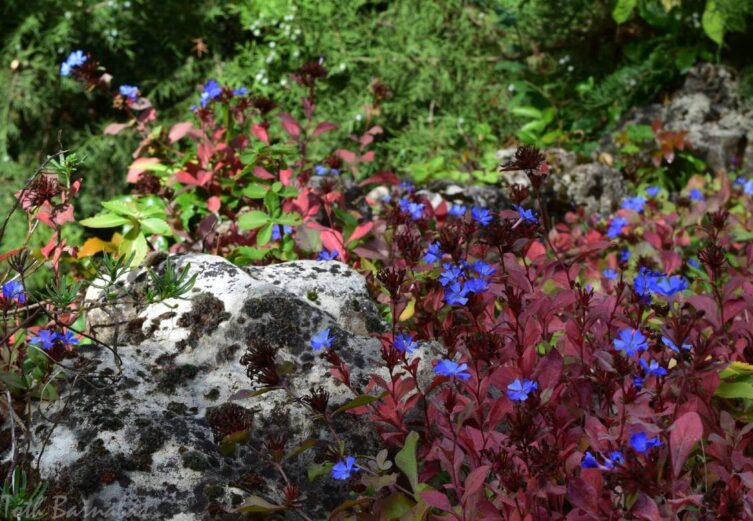
Image source: Buda Arboretum
Special attention has been given to Hungarian native species and varieties developed by Hungarian breeders. Examples include the rich selection of native whitebeams (Sorbus spp.) like the round-leaved whitebeam (S. rotundifolia) native to the Bükk Mountains, the Vértes whitebeam (S. vertesensis), Dégen’s whitebeam (S. degenii), and the Balaton whitebeam (S. balatonica). Some of the most beautiful specimens are in high demand even beyond Hungary’s borders. The Hungarian-bred varieties of silver linden (Tilia tomentosa) are also famous.
The arboretum’s unique microclimate allows it to host a rich Mediterranean collection. Fig trees (Ficus carica) and Asian persimmon (Diospyros kaki) regularly bear fruit, while broom (Spartium junceum) and pomegranates (Punica granatum) bloom abundantly every year. True cypresses (Cupressus), yuccas, evergreen buckthorn (Rhamnus alaternus) and holm oak (Quercus ilex) overwinter without damage. In the shady, humid nooks of the buildings, real subtropical plants thrive, like the Chinese windmill palm (Trachycarpus fortunei), fatsia (Fatsia japonica), and variegated varieties of southern ivies (Hedera colchica, H. canariensis).
Habitat and Refuge
In addition to being a collection garden, the arboretum as a nature reserve has an important role in providing habitat for native wildlife. This is especially crucial in the heavily built-up environment of Budapest’s 11th district, where remaining contiguous green space is a rare treasure.
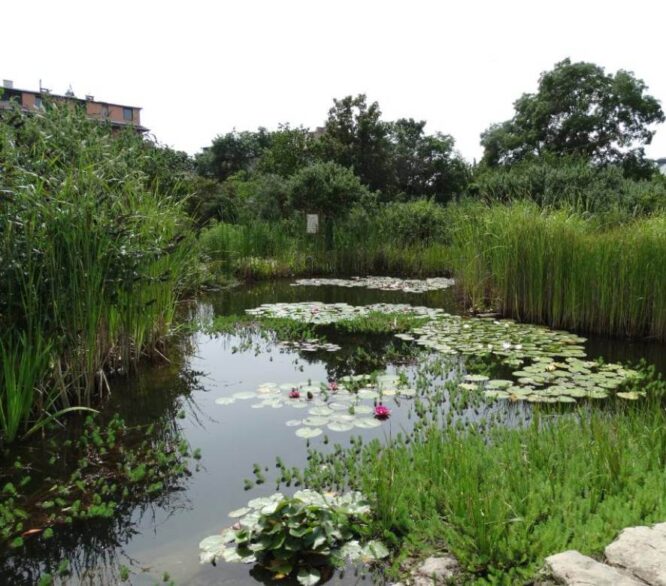
Image source: Buda Arboretum
The diverse vegetation is paired with a richer fauna. Compared to typical agricultural fields or simpler city parks, more animal species find food and shelter among the variety of plants here. The maintenance practices of the arboretum also aim to consider the needs of resident animals as much as possible.
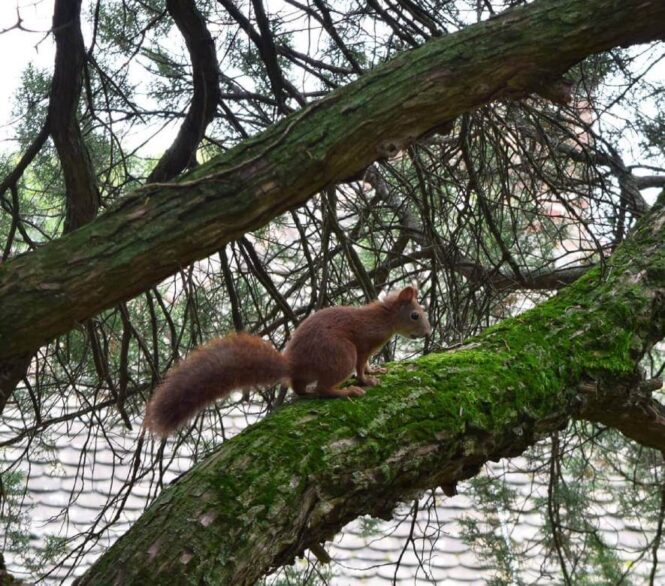
Image source: Buda Arboretum
The living conditions of the bird species inhabiting the area receive special attention. With the help of volunteers from BirdLife Hungary, the arboretum was awarded the title of “Bird-Friendly Garden” in 2006. In addition to the opportunities provided by the vegetation, artificial nesting places and nesting boxes have been installed, in which smaller birds, mainly great tits and tree sparrows, regularly breed. In winter, fruits and seeds on the shrubs and trees provide food for visiting flocks of birds, supplemented by fresh sunflower seeds in the birdfeeders placed at several points around the area.
Conservation and Education
Recognizing its outstanding dendrological values, environmental significance, and important role in Hungarian horticultural higher education, the Budapest city leadership declared the Arboretum a nature conservation area in 1975.
The arboretum’s primary, inseparable task is to participate in education, providing a demonstration garden for students learning about ornamental plant production, dendrology and ornamental horticulture. It also serves as a site for introduction trials of new woody ornamental plants entering Hungary and displays the results of domestic dendrological selection work.
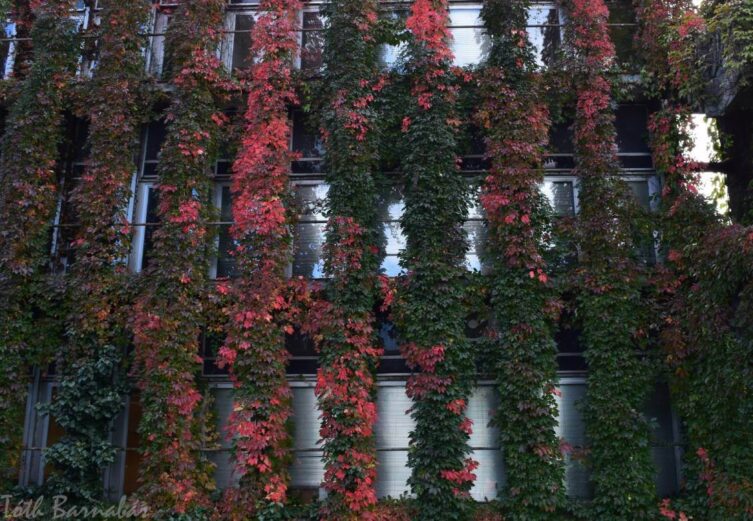
Image source: Buda Arboretum
In summary, the Buda Arboretum is not only a pleasant environment for human visitors, but also an important refuge where a variety of wildlife finds food, shelter, and in some cases, a permanent home in the heart of the bustling city. Its rich collections serve the goals of education, research and conservation, making it a significant center of biodiversity in urban Budapest.
Provided Services
The arboretum’s primary function is to serve as a demonstration garden for students studying ornamental plant production, dendrology and ornamental horticulture. It contains nearly 2,000 species and varieties of woody ornamental plants, hundreds of bulbous flowers, and about 250 other perennial ornamental plants. This allows students to see examples of almost all woody ornamental plants currently found in nurseries and garden centers in Hungary.
In addition to its educational role, the arboretum is also involved in plant introduction and breeding. New woody ornamental plants brought into Hungary are tested here and, if results are favorable, they are propagated and more widely distributed. The arboretum’s climate and soil conditions are ideal for this purpose. Plants that thrive here can generally be successfully planted in any part of the country.
The arboretum also showcases the results of Hungarian dendrological selection work. Examples include clones of Tilia tomentosa, Juniperus communis, and Fraxinus ornus, the Sorbus cultivar collection, and Hungarian-bred cultivars of Chamaecyparis lawsoniana and Prunus laurocerasus.
Recognizing its outstanding dendrological values, environmental significance, and important role in Hungarian horticultural higher education, the Budapest city leadership declared the area of the Arboretum a nature reserve in 1975. As a protected area, it also provides habitat for rare and endangered plant species, participating in their ex situ conservation.
Visitors can freely explore the arboretum during opening hours while following the rules to protect the natural wildlife. The diverse plant life supports a rich insect fauna, which in turn attracts insectivorous songbirds and other animals like hedgehogs. The arboretum has been recognized as a bird-friendly garden, providing nesting places, food sources, and a refuge for many bird species in the heart of the bustling city.
With its unique microclimate, the Buda Arboretum allows visitors to see plant rarities that could not survive elsewhere in Hungary. Mediterranean species like fig, pomegranate, and evergreen oak thrive in its warm, sheltered environment. The Upper Garden is known for its beautiful and rare old trees, including the country’s oldest Persian ironwood. A stroll through the grounds in any season reveals the great diversity and beauty of the plant collections.
House Rules
The Buda Arboretum, located in the heart of Budapest, is a lush oasis and protected nature reserve that is home to nearly 2000 species and varieties of woody ornamental plants, hundreds of bulbous flowers, and around 250 types of other perennial ornamental plants. The arboretum is a popular destination for both Budapest residents and tourists looking to escape the bustle of the city and immerse themselves in nature.
To ensure an enjoyable experience for all visitors while protecting the arboretum’s precious flora and fauna, guests are kindly asked to observe the following rules during their visit:
- Admission to the arboretum is free of charge during opening hours. However, please note that on April 19-21, 2024, the arboretum will host the traditional “Springtime Garden” Ornamental Plant Trade Exhibition and Fair. On these days, entry is only possible with the purchase of a ticket to the event during the exhibition opening hours.
- Please refrain from damaging or collecting any part of the vegetation, including leaves, shoots, flowers, seeds, fruits, roots or other plant parts. Climbing trees and damaging garden equipment is strictly prohibited.
- To avoid disturbing the arboretum’s wildlife, please keep noise to a minimum and refrain from sports activities, ball games, or listening to loud music. Dogs and other pets are not permitted on the premises.
- Please stay on the designated paths and do not enter restricted areas marked with signs. Stepping or sitting on the lawn may inadvertently damage hidden plants or animals.
- Vehicles, bicycles, scooters, roller skates and other means of transport are not allowed in the arboretum. A bicycle storage rack is available next to Building ‘K’.
- Open fires are strictly forbidden. Smoking is only permitted in designated areas. Please extinguish cigarette butts and dispose of them in the waste bins provided.
- Children under the age of 14 must be accompanied by an adult at all times.
- Please dispose of any waste in the bins provided. Littering is prohibited.
- In windy or stormy weather, please stay clear of large trees as strong winds can cause damage to older specimens and falling branches pose a safety risk.
- Ticks are prevalent in the area. Use of insect repellent is recommended. After your visit, check your skin thoroughly as ticks can transmit dangerous infections. Consult a doctor if necessary.
- Please be mindful of any maintenance work or large machinery operating in the arboretum and do not obstruct gardening activities.
- Photography and filming for commercial purposes (e.g. for publication, commercial, wedding photography, etc.) is only permitted with prior authorization. Please contact staff well in advance to obtain a permit.
By following these simple guidelines, visitors can fully enjoy the wonders of the Buda Arboretum while helping to preserve this unique natural treasure in the heart of Budapest for generations to come.
Opening Hours
March 1 to October 23
- Lower Garden (area bordered by Villányi út – Szüret utca – Ménesi út, main entrance from Villányi út): Monday-Friday 8am-6pm, Weekends 8am-6pm
- Upper Garden (area bordered by Ménesi út – Szüret utca – Somlói út, entrance from Ménesi út): Monday-Friday 8am-6pm, Weekends CLOSED
October 24 to February 29:
- Lower Garden: Monday-Friday 8am-4pm, Weekends 8am-4pm
- Upper Garden: Monday-Friday 8am-4pm, Weekends CLOSED
Getting There
By Public Transport
- Tram 17 running on the route Bécsi út – Savoya park: Get off at the “Tas vezér utca” stop. The entrance of the arboretum is a 30-second walk from there.
- Tram 61 running on the route Móricz Zsigmond körtér – Hűvösvölgy: Get off at the “Tas vezér utca” stop. The arboretum is a 30-second walk away.
- Bus 27 running on the route Móricz Zsigmond körtér (Villányi út) – Sánc utca: Get off at the “Szüret utca” stop for the Villányi út entrance of the Lower Garden, or the “Ménesi út” stop for the entrances of the Upper Garden.
By Car
Parking is available on Villányi út next to the university for a fee, as well as on most surrounding side streets. Parking fees also apply on Ménesi út and the section of Villányi út from Szüret utca to Móricz Zsigmond körtér. Parking spaces are often occupied, so using public transport is recommended if possible. Unfortunately, parking inside the campus cannot be provided for arboretum visitors.
Nearby Attractions
The Arboretum of Buda, located on the southern slopes of Gellért Hill is surrounded by several notable attractions in the vicinity that are worth exploring:
- Gellért Hill and the Citadella: Rising above the arboretum is the 235 meter tall Gellért Hill, topped by the 19th century Citadella fortress. Hike up to the fortress for panoramic views over Budapest and the Danube River. The hill is also home to the scenic Jubilee Park and the famous Gellért Hill Cave Church.
- Gellért Baths: At the base of Gellért Hill on the Danube riverbank sits the majestic Gellért Baths, one of Budapest’s most famous thermal spa complexes. Soak in the mineral-rich waters of the elaborately decorated indoor pools or relax in the outdoor wave pool. The baths were built in an Art Nouveau style between 1912-1918.
- Liberty Bridge: The green-colored Liberty Bridge spans the Danube between Gellért Square and Fővám Square. Opened in 1896, it was the third and shortest bridge constructed in Budapest. Stroll across for excellent views of Gellért Hill, the Citadella, and the Buda Castle district.
- Great Market Hall: Just across Liberty Bridge is Budapest’s largest and most famous indoor market. The vast three-story Great Market Hall, built in 1897, is a great place to shop for Hungarian specialties, fresh produce, and souvenirs. Be sure to check out the stalls on the second floor for traditional Hungarian dishes.
- Móricz Zsigmond Circus: A short walk from the arboretum’s main Villányi Road entrance is Móricz Zsigmond Circus, a major transportation hub and popular square. In addition to being a busy tram and bus interchange, the circus is ringed by shops and cafes and often hosts outdoor markets and food truck gatherings.
- Feneketlen Lake: Translating to “Bottomless Lake”, this small scenic lake just north of the arboretum is a popular recreational spot with locals. Stroll the tree-lined paths around the lake, relax on a bench to people-watch, or grab a drink from the lakeside bar. Despite the name, the lake is actually only about 5 meters deep.
While visiting the Buda Arboretum, be sure to allow some time to explore these nearby attractions to get a fuller picture of this fascinating and historic area of Budapest. The arboretum’s location makes it an ideal starting point for discovering the best that Buda has to offer.
Summary
The Arboretum of Buda is a unique nature reserve in the heart of Budapest, home to a rich collection of ornamental plants from around the world. With nearly 2,000 species and varieties of woody plants and hundreds of herbaceous ornamentals, it serves as a vital demonstration garden for horticultural education and plays an important role in plant preservation and breeding. Visitors can enjoy the beauty and tranquility of this green oasis while adhering to the rules that protect its valuable wildlife. Easily accessible from the city center, the Arboretum of Buda is a must-see attraction for nature lovers visiting the Hungarian capital.
Related news













